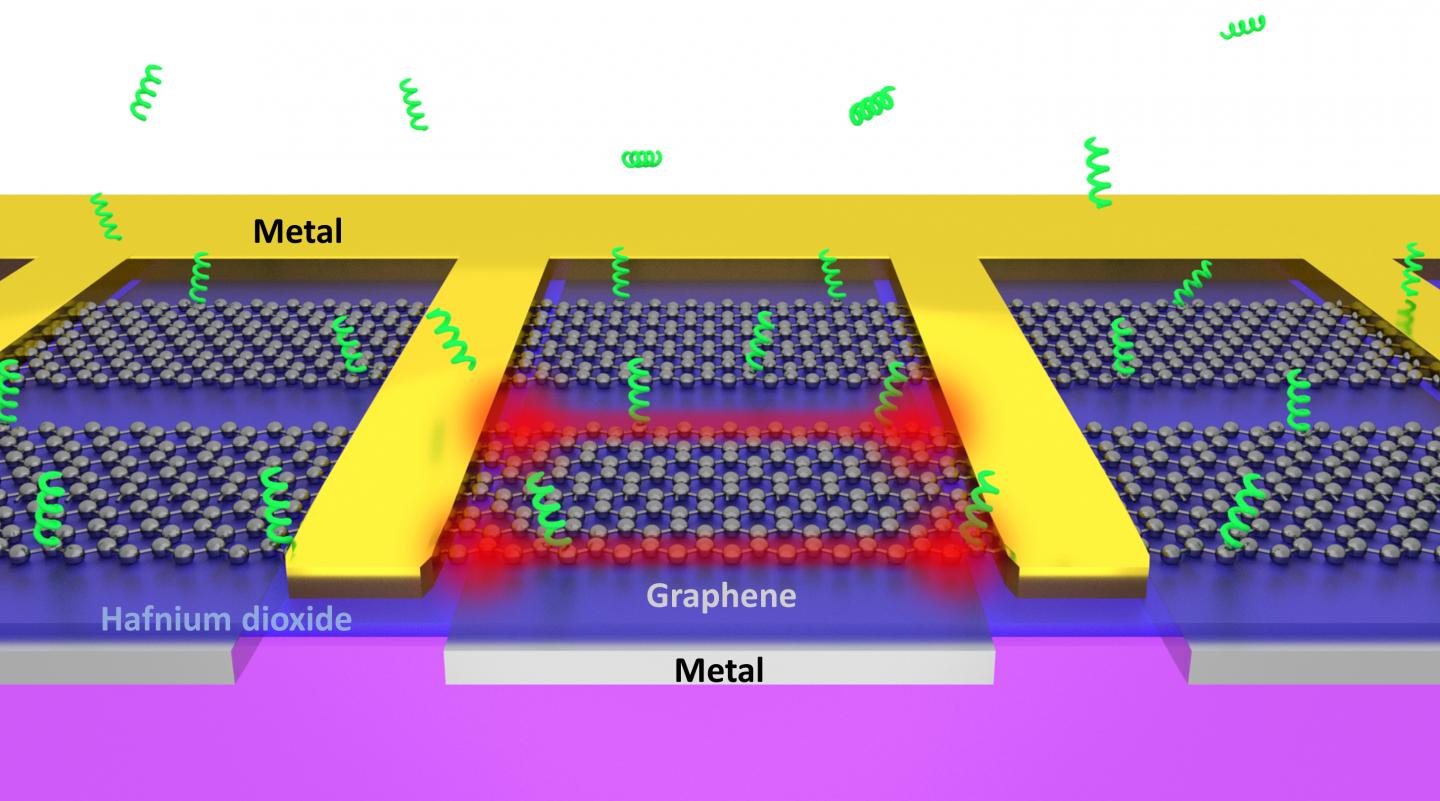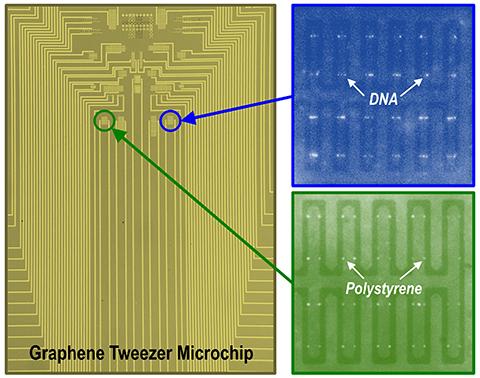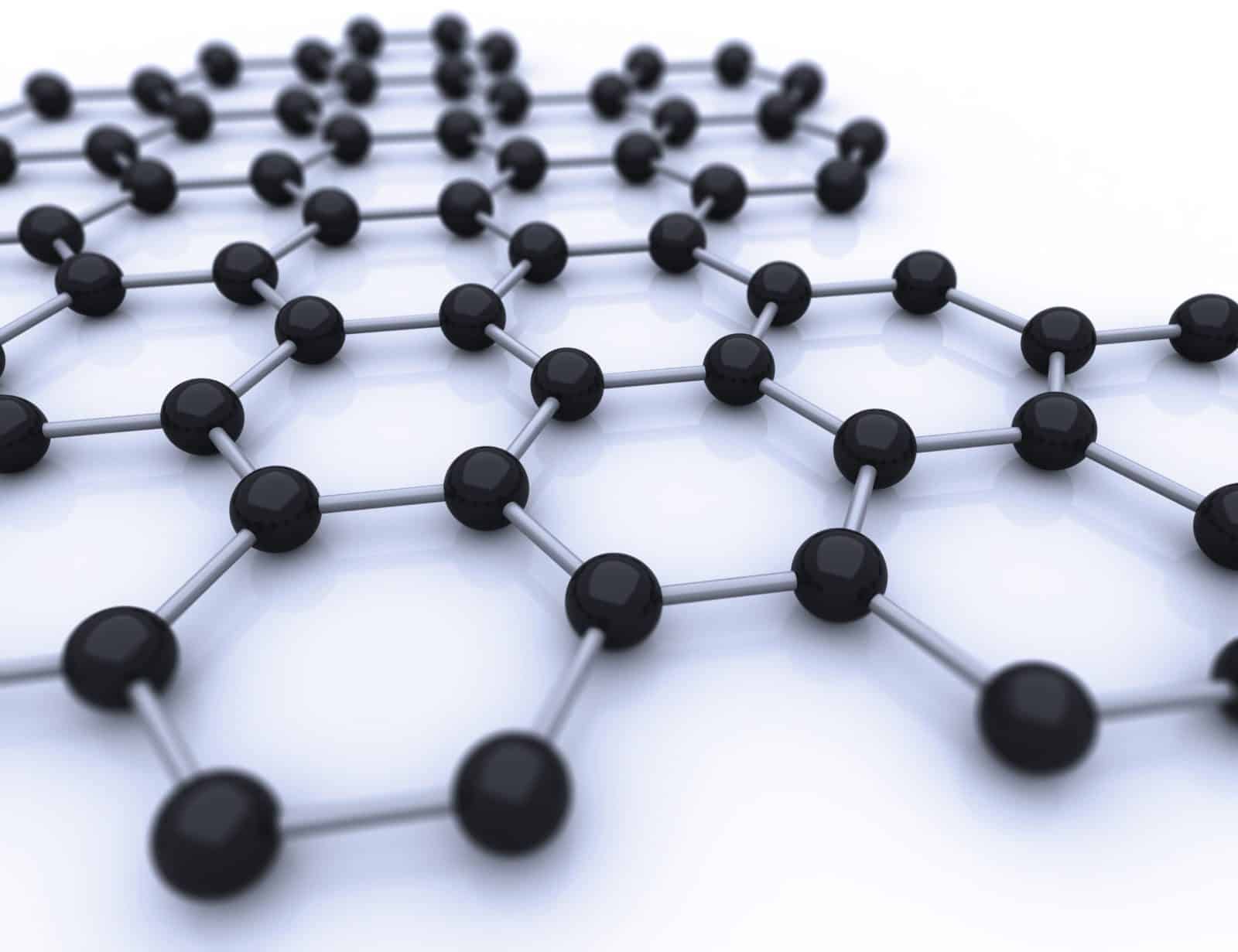Graphene, a material made of a single layer of carbon atoms, was discovered more than a decade ago and has enthralled researchers with its range of amazing properties that have found uses in many new applications from microelectronics to solar cells.
Graphene is an excellent alternative to noble metals for constructing a wide range of sensors due to its electrical tunability high quantum efficiency for light-matter interactions quantum capacitance effects and tightly confined mid-infrared plasmons. As with other surface-based biosensors, however, the performance is limited by the diffusive transport of target molecules to the surface.
Now, researchers at University of Minnesota College of Science and Engineering have found yet another remarkable use for the wonder material graphene—tiny electronic “tweezers” that can grab biomolecules floating in water with incredible efficiency. This capability could lead to a revolutionary handheld disease diagnostic system that could be run on a smart phone.

Furthermore, these graphene tweezers developed at the University of Minnesota are vastly more effective at trapping particles compared to other techniques used in the past due to the fact that graphene is a single
atom thick, less than 1 billionth of a meter.“Graphene is the thinnest material ever discovered, and it is this property that allows us to make these tweezers so efficient. No other material can come close,” explained senior study author Sang-Hyun Oh, Ph.D., professor in the University of Minnesota’s department of electrical and computer engineering. “To build efficient electronic tweezers to grab biomolecules, basically we need to create miniaturized lightning rods and concentrate a huge amount of electrical flux on the sharp tip. The edges of graphene are the sharpest lightning rods.”
The team also showed that the graphene tweezers could be used for a wide range of physical and biological applications by trapping semiconductor nanocrystals, nanodiamond particles, and even DNA molecules. Normally this type of trapping would require high voltages, restricting it to a laboratory environment, but graphene tweezers can trap small DNA molecules at around one Volt, meaning that this could work on portable devices such as mobile phones.
Another exciting prospect for this technology that separates graphene tweezers from metal-based devices is that graphene can also “feel” the trapped biomolecules. In other words, the tweezers can be used as biosensors with exquisite sensitivity that can be displayed using simple electronic techniques.

Using the University of Minnesota’s state-of-the-art nanofabrication facilities at the Minnesota Nano Center, the research team made the graphene tweezers by creating a sandwich structure where a thin insulating material called hafnium dioxide is sandwiched between a metal electrode on one side and graphene on the other. Hafnium dioxide is a material that is commonly used in today’s advanced microchips.
“Since we are the first to demonstrate such low-power trapping of biomolecules using graphene tweezers, more work still needs to be done to determine the theoretical limits for a fully optimized device,” remarked lead study investigator Avijit Barik, a University of Minnesota electrical and computer engineering graduate student.
“For this initial demonstration, we have used sophisticated laboratory tools such as a fluorescence microscope and electronic instruments. Our ultimate goal is to miniaturize the entire apparatus into a single microchip that is operated by a mobile phone.” He said.






























